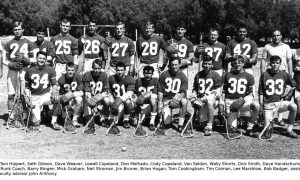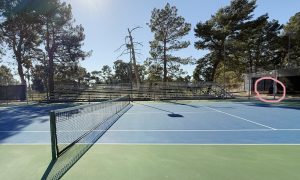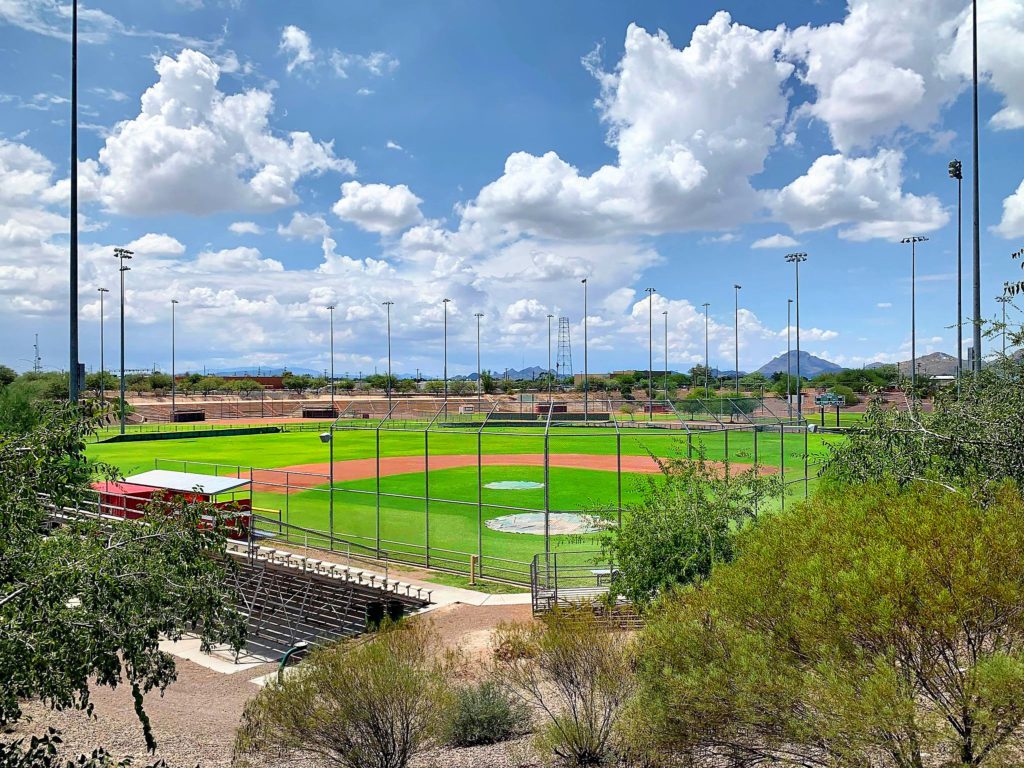
LINK: MORE HISTORIC VENUES HERE
Sometime between 1906 and 1910, the move from playing “foot-ball” at a field called “Elysian Grove” to Tucson High became permanent, but there have been several attempts to have the Badgers play elsewhere – from farfetched plans to moves due to emergencies.
The Carrillo K-5 Magnet School (Main Avenue just south of Cushing Street) is situated just east of the original dirt plot where teenagers, college students and adults played football and baseball. The Elysian Grove Market is to the west of the campus on Simpson Street.
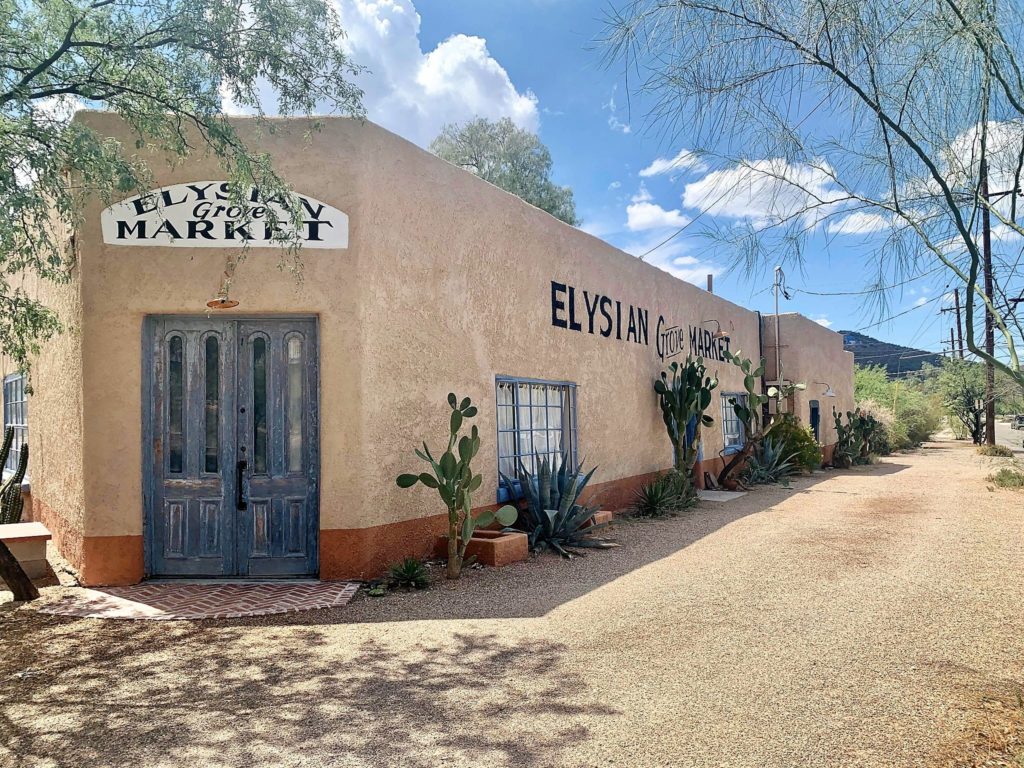
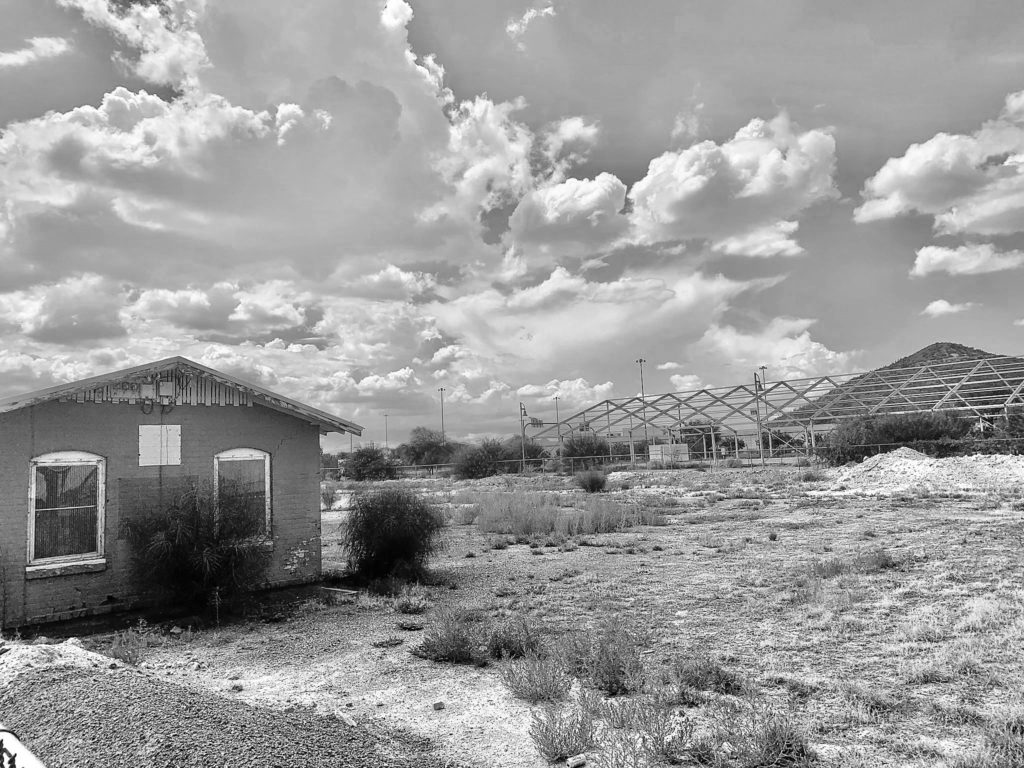
Pop McKale describe the Elysian Grove Fields as being just west of Carrillo School. (Andy Morales/AllSportsTucson)
At about the same time, Anna Lester started naming streets in the University of Arizona area and “Cherry Street” got its start. The name of the street would slowly change to “Cherry Avenue” as it began to move south of Arizona sometime between 1910 and 1925 but some still use “street” to this day. The Cherry Avenue stretch south of Broadway was paved in 1930 and plans for a subway under the railroad tracks were squashed in 1940 which kept the avenue a neighborhood street rather than a main artery like Campbell. This decision changed Tucson dramatically.
In 1947, The “Cherry Practice Field” opened for Tucson High on the huge property with plans to build a stadium to fit 20,000 fans, big enough for three planned high schools. Think Texas football. Under this plan, the old stadium at the high school would be used for physical education classes and baseball would move to Randolph Park. Instead, baseball and track moved over to the Cherry field and football would also practice there. There were no funds for a huge stadium. Moving to Cherry also provided space for the tennis courts at the high school.
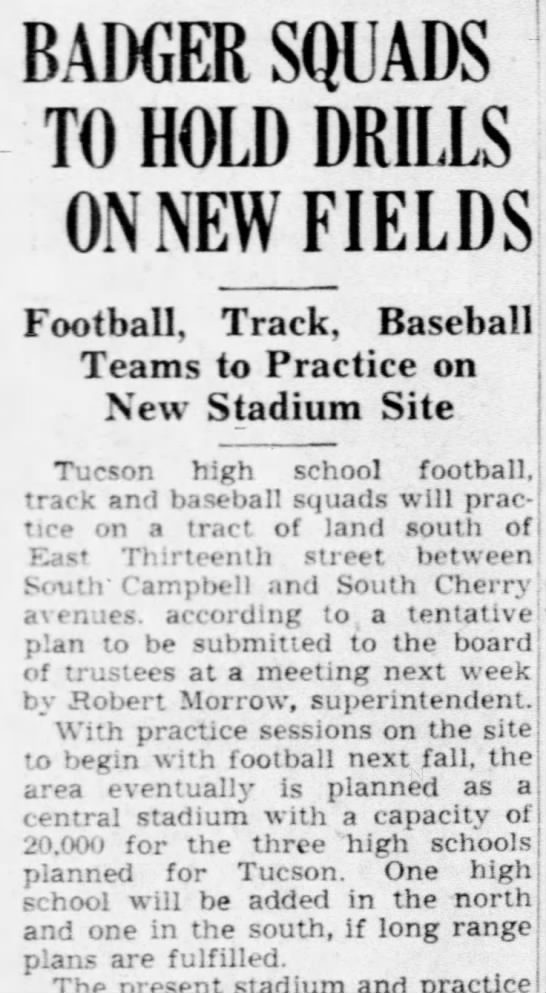
In 1948, the City of Tucson began to talk about removing part of the area for a storm basin but talks switched to building one at Randolph Park instead. This talk would obviously come back some 40 years later.
Also in 1948, Cherry Field became available to city leagues and the UA baseball team would scrimmage Tucson High there. Tucson High also expanded seating for home football games to 8,000 fans at the school.
In 1950, night high school relays began at “Cherry Street Field” for the first time since 1945. The AIA limited the number of baseball games to 16 so Tucson dropped two scheduled scrimmages against Arizona. Arizona expanded its stadium to 25,000 seats and Salpointe opened up. Hank Slagle put in a JV and varsity baseball field at Cherry.
There were still hopes on a 20,000 capacity football stadium at what was now called Cherry Field and the baseball fields would have served as parking lots for the football stadium. It would have been the first crowned field in Arizona complete with a watering system and lights.
Little League came in 1951, including a young infielder for the Optimist Club, Roland LaVetter. The UA also held youth football camps at Cherry in 1951.
In 1952, a woman by the name of W.E. Heinrichs addressed the Tucson Governing Board and suggested the district draw up one set of plans and reuse those plans for multiple high schools to save money. The district obviously took her up on her suggestion which is why several TUSD high schools look almost identical to this day.
Amphitheater lost to Tucson High in the state title game in 1952 and that game had to be played at Arizona Stadium due to the large crowd capacity.
In 1955, plans to get a baseball stadium at Cherry failed even though the 20,000 proposed capacity for a football stadium was drastically reduced to just 2,500 for baseball. The powerful commander of the VFW, William J. Bray, Jr., was the force against local swimming pools and the baseball stadium because he feared the stadium would attract a second pro baseball team to Tucson. You read that correctly.
Through it all, the Tucson High football team stayed at the high school and talks of stripping away some of the nine city blocks away from Cherry Field began in 1983 for Kino Blvd.
In 1985, the City sued TUSD for 5.5 acres of the property, including the old Cherry Alternative High School. The baseball team played at Santa Rita Park and the football team practiced at school and at Reid Park. The TUSD Board wanted to clear the neighborhoods just west of campus and south of campus for athletic fields but the teams returned to Cherry Field after Kino Blvd. was expanded.
n 1987, the TUSD board upgraded the football field at Tucson High and the Badger football stadium was renamed “Rollin T. Gridley Stadium” in 2000.
In 2003, the Pima football team constructed a synthetic field for football with hopes that the community would benefit from it. In 2006, Tucson High became the first high school team from Southern Arizona to play on artificial turf on August 25 and Cienega followed a week later on their own artificial turf with a game against Salpointe. The turf at Tucson was said to last 12 years and it almost made it.
In 2008, the storm basin talks at Cherry Field from 40 years earlier came to fruition and the $20 million project turned the official name of the facility to “Cherry Field Detention Basin” with two baseball fields and two softball fields, ready for 2009.
The Tucson High football team found itself back at Cherry Field for practices in 2017 after the stadium was unable to drain after a storm and the Badgers held games at Kino North until Aug. 24, 2018.
FOLLOW @ANDYMORALES8 ON TWITTER













